CAMERA RULES
In live-action movies, it is the cameraman who decides about the camera position and the picture size, and of course following the ideas of the director. In animation it is the layout artist who plans the use of the camera. He executes what has been planned in rough sketches in a workbook meeting. This stage is visually the most important moment of the movie, because at this point the storyboard is being translated into film language. Usually a storyboard in animation is not visually interesting. Its job is only to tell the story. The breakdown into different shots, perspectives, the choice of the number of characters in one scene, the exact location following a floor plan, the direction of the light, props, effects — all of this is decided in the workbook meeting. It is easy to imagine that only one sequence can be worked out in a several hours-long meeting, with all major department heads in attendance.

wide shot

long shot

medium shot

close-up
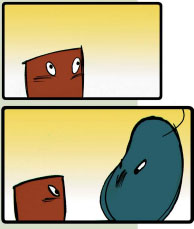
side view profile shots
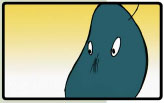
shots are possible within a 180° radius from one side of the characters
A TYPICAL DIALOGUE SET UP

establishing or wide shot

medium shot

close-ups


master shot

over the shoulder shots
Usually it is the job of the production designer to come up with sketches of the best choice of camera angle in these meetings. That’s why it is so important to know everything about them, when to use them and why. It is not accidental to have a low positioned camera for an upshot. You want to emphasize a threatening situation, or during a dialogue

sequence explain the relation between characters. Dialogue scenes in particular need very careful planning. To make them interesting you cut from close ups to medium- or wide-shots, use over-the-shoulder or POV (point of view) positions. It gets more and more complicated the more characters are involved. You can confuse the audience completely when you jump around uncontrollably with your camera. The location and

eye level
the relation of every single character to each other has to be followed by the movement of the camera. I will explain jump-cuts later. They can be a disaster and completely destroy a sequence. It is dangerous to lose control over a logical development of a sequence like that, and a confused audience will not be able to follow the story.

profile two shot

downshot
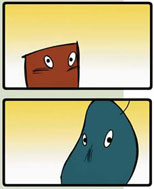
POVs (point of view)

upshot
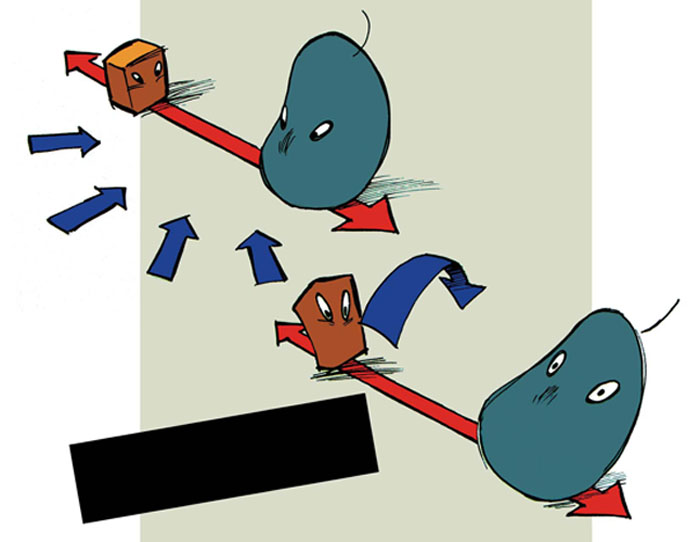
shots are allowed along a 180° invisible line connecting the characters — the crossing of this line is called a JUMP CUT
It is very helpful to work out the whole sequence in floor plans. The position of the camera and the movement from scene to scene is very easy to plan that way. The floor plan shows where the light comes from and what is important for the continuity during the sequence. You can even choreograph the movements of the characters that way before you translate everything into single cuts.
When movies are analyzed, it is very interesting to see and compare their visual rhythm, the number of wider shots compared to the close-ups, and within these shots the numbers of characters involved. This is very important for the budget of your movie. The more characters you have to animate, the more expensive your movie will be to make. Careful planning in the early stages will keep the costs down. It is not too difficult to work out a smart scene- and size-rhythm where you don’t even notice that most of the time only one character is on the screen. Then you can spend your extra budget on establishing shots and action sequences with lots of characters in long- and wide-shots involved.
These close-ups or medium shots of one character need a very good animator though, because they have to show well-animated emotion, and lip-sync has to be accurate.
As you can see in these examples it is not too difficult, there are only a few rules you have to know. It is more important to be creative and to come up with new ideas for your own film language. But it doesn’t hurt to study the masters and analyze why Citizen Kane looked so good.
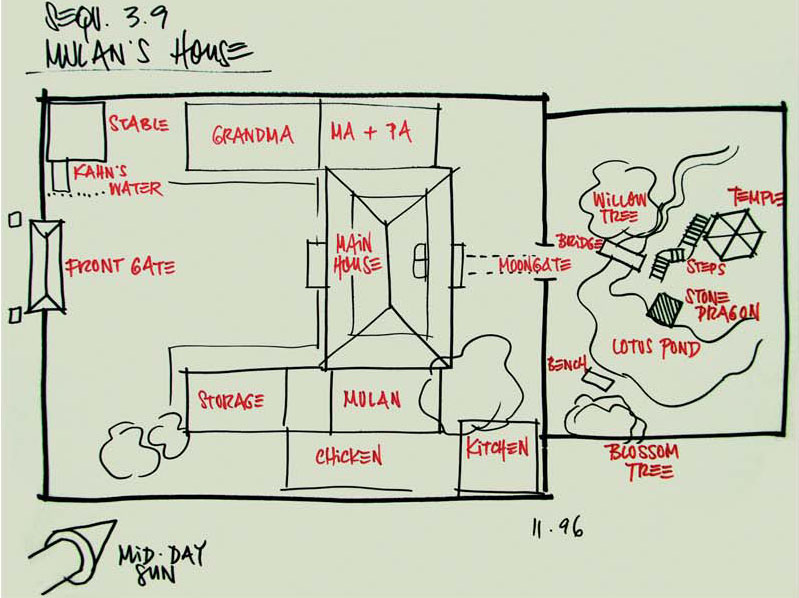
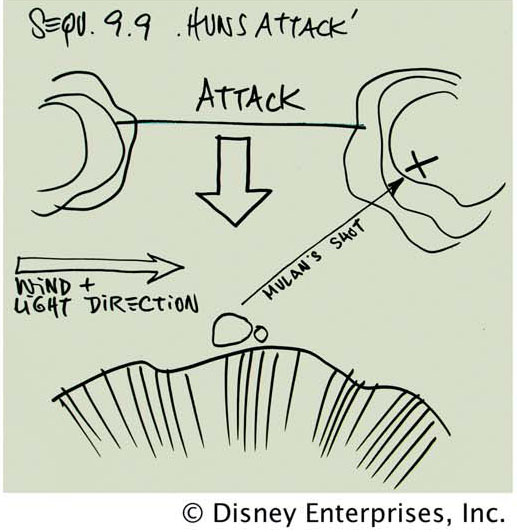
floorplans from MULAN
